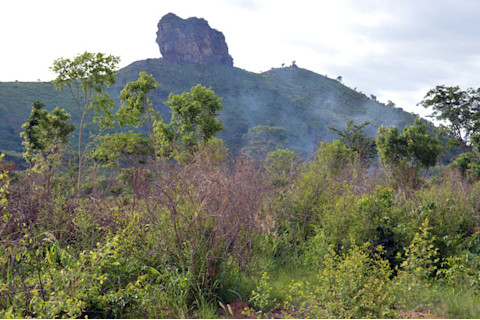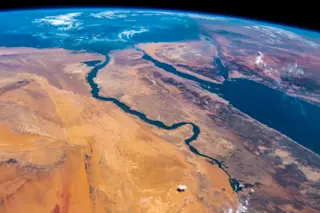We're nearing the end of the Group Stage here in the Volcano World Cup. Check out the voting for Group A, Group B, Group C, Group D, Group E and Group F. Today we have a group that might most closely resemble its real world counterpart in terms of difficultly - the dreaded Group G: Germany, Ghana, Portugal and the United States. Germany: The largest country of central Europe might not be the first country you think of when you're pondering the largest eruptions on the continent. However, a relatively unassuming lake in western Germany was the site of just that -- the Laacher See (see below) is a caldera that produced an eruption that spread ash as far as Sweden and Norway and buried much of the area around present day Dusseldorf and Koln with meters of ash. Sure, that eruption was over 12,000 years ago, but the caldera likely still hosts some (cooling) magma as carbon dioxide seeps through the bottom of the lake (but no, isn't ready to blow).

The massive volcanic ash and pumice deposits from the Laacher See caldera.

Erik Klemetti Ghana: All these western African nations just don't have much modern volcanism at all. Ghana is most famous (geologically-speaking) for its gold deposits that are related to the Birimian Sequence, a pile of ancient rocks that are a mix of volcanic material and sediment. However, not much is preserved in these rocks that hasn't been metamorphosed beyond recognition.

An erosional remnant in the Kwahu Mountains of Ghana.

Beige Village / Wikimedia Commons Portugal: All of Portugal's volcanic talent lies offshore. In the middle of the Atlantic lie the Azores, a group of volcanic islands related to a hotspot near the intersection of three tectonic plates. The Azores Platform extends to the east off of the Mid-Atlantic Ridge, the spreading center that pushed North America and Europe/Africa apart, and was mainly constructed during a period when there was strong interaction between the Azores hotspot and the ridge (~4-10 million years ago). The volcanoes of the Azores are definitely still active, with eruptions as recently as 2000 (Terceira - a submarine eruption) and 1957 (Fayal, see below). Much of the volcanism is basaltic, so think lava flows or small cinder cones like the one in the image of Fayal (below).

A small cinder cone on the flanks of Fayal in the Azores, seen in July 2010.

Guillaume Baviere / Flickr United States: Unlike the real Group G, the United States has to be the heavy favorite in the Volcano World Cup Group G. Within the 50 states, the United States boasts the Cascade Range, the Long Valley caldera, Yellowstone, the Aleutians and Hawaii. Throw in the protectorates like the Mariana Islands, and the United States is hard to beat when it comes to volcanism. Now, much of the active eruptions these days are happening either along the Aleutian chain in Alaska (see the image of Pavlof erupting in 2013) or from Kilauea on the big island of Hawaii. However, few volcanoes have more notoriety than Washington's Mount St. Helens or the (in)famous Yellowstone caldera in Wyoming.

The eruption of Pavlof in Alaska, seen from the International Space Station on May 18, 2013.

ISS Crew Earth Observations, Johnson Space Center / NASA Select the two nations you think should move onto the Round of 16 in the Volcano World Cup. Voting will be open until June 26 at noon eastern time.













